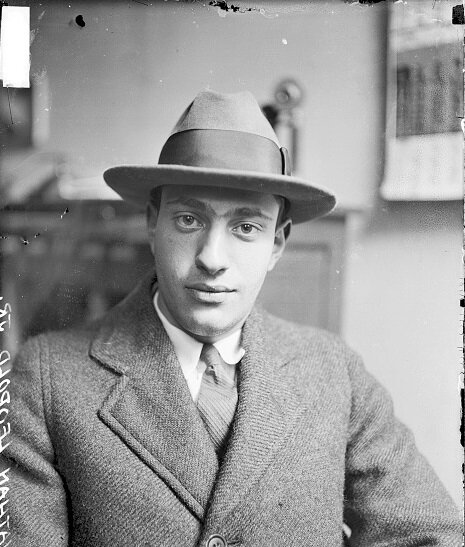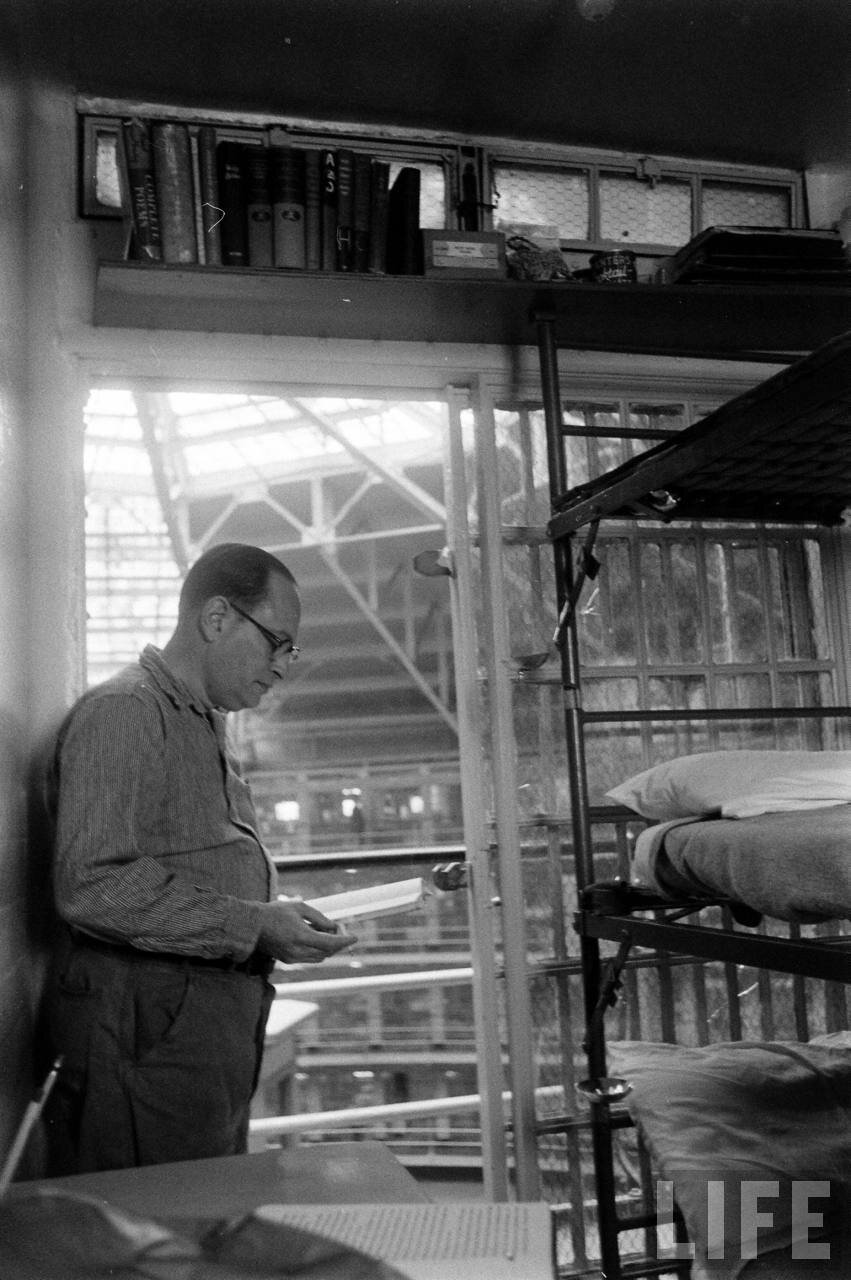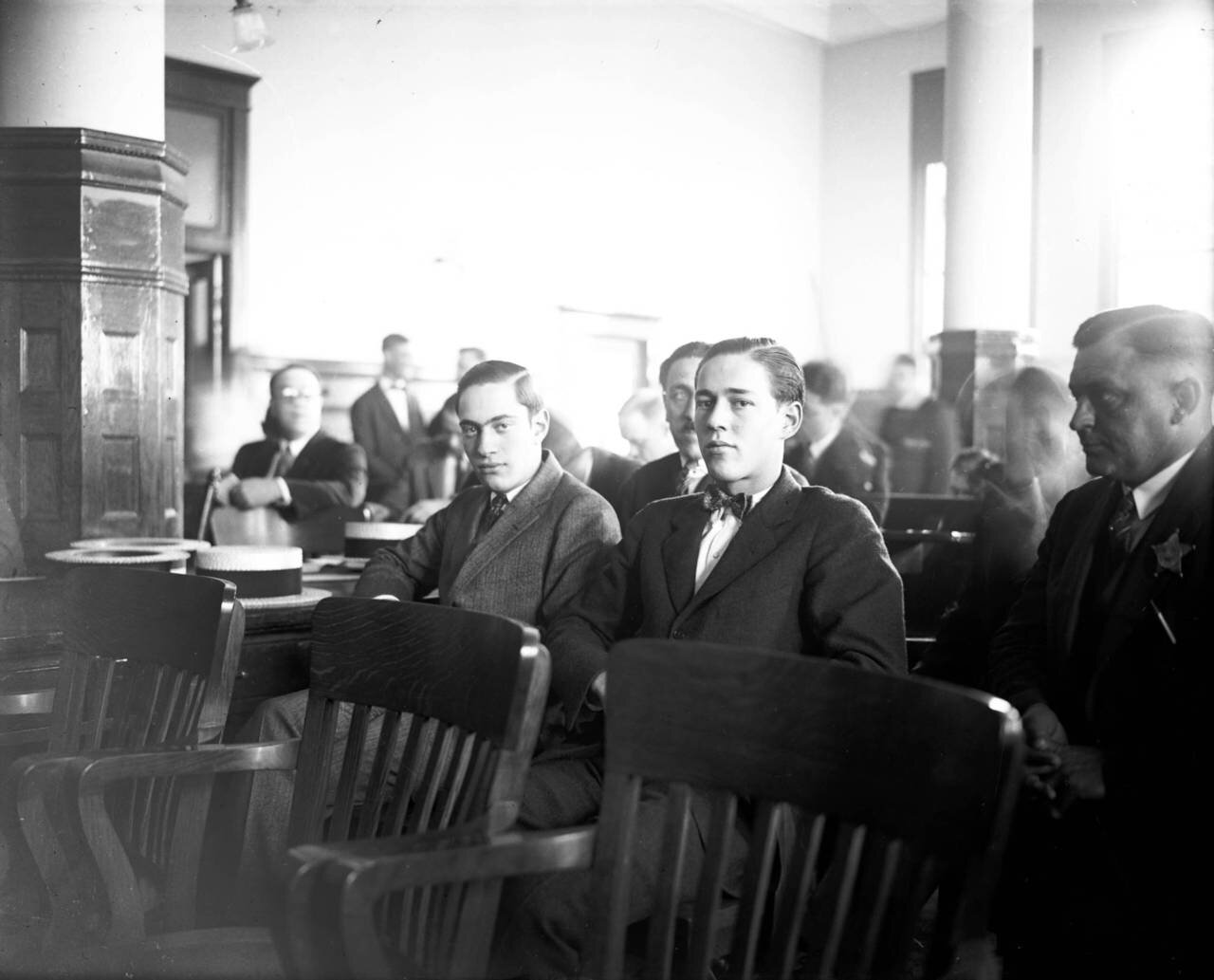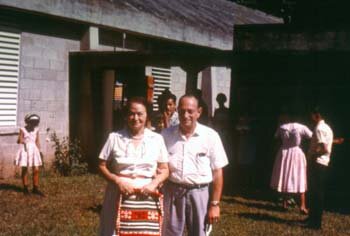Nathan Leopold, aged 19. Picture taken on May 30, 1924. Chicago Daily News
Leopold in February of 1957, posing in his cell. LIFE
The Life of Nathan Leopold
Nathan F. Leopold Jr. was born on November 19, 1904 to Florence and Nathan Leopold Sr. Raised in luxury, Leopold grew up on the South Side of Chicago, attending private schools and impressing his teachers with an incredible memory and a gift for languages. He graduated high school at fifteen and began at the University of Chicago a few blocks from his home, where he started hanging around with another young prodigal student: Richard Loeb.
Leopold and Loeb became friends, then lovers, and it didn’t take the teenagers long before they began committing crimes together as well. Unbeknownst to their parents, the pair would sneak out at night to commit grand theft auto, armed robbery and arson. After once such robbery in 1923 Loeb proposed a new idea: they should commit a perfect crime. One that was so intricate and detailed that it would gain wide media attention, but so expertly designed that they would never be caught.
Of course the two were caught. On May 31, 1924, ten days after committing their so-called perfect crime, both boys confessed to the kidnapping and murder of their 14-year-old neighbor Bobby Franks. The rest of the spring and summer was taken up with psychiatric examinations and a lengthy sentencing hearing. Part of their object had been achieved; they were now the center of a media circus. Newspapers around the world carried their pictures and thousands tried to attend the public court sessions. In September both teenagers were sentenced to Life and 99 years in prison.
Once behind bars Leopold did what he could to keep his mind active: he studied languages, wrote letters to Albert Einstein and nearly earned a PhD. After Loeb was killed in 1936 Leopold worked as the director of the prison school he and Loeb had created, then as a nurse in the prison’s hospital. He gave almost no interviews for three decades, so when he reemerged before the public press in the early 1950s hoping to get parole, he was hardly recognizable. Gone was the young, arrogant killer, replaced with a portly, balding, middle-aged man, apparently humbled by his years in prison. After many failed attempts, Leopold was released from prison in March of 1958. Because it was thought he would be mobbed by publicity on the continental United States, Leopold was sent to a small missionary hospital in the mountains of Puerto Rico to serve his parole.
In Puerto Rico Leopold proved monumentally successful. In 1961 he graduated with a Master’s degree in social work and got married. He and his wife lived in a suburb of San Juan with their dogs and were fond of cocktail parties, relaxing on the beach and world travel. Never one to forget a favor, Leopold raised thousands of dollars every year to donate to the Protestant mission that had given him his first civilian job. When he died in 1971 the governor of Puerto Rico stated to the press: “The story of Nathan Leopold is one that must confirm the faith and intrinsic goodness of the human being.”
Leopold and Loeb waiting to be sentenced on September 10, 1924. Chicago Tribune
Leopold with his wife in Puerto Rico. Castañer Photo History



